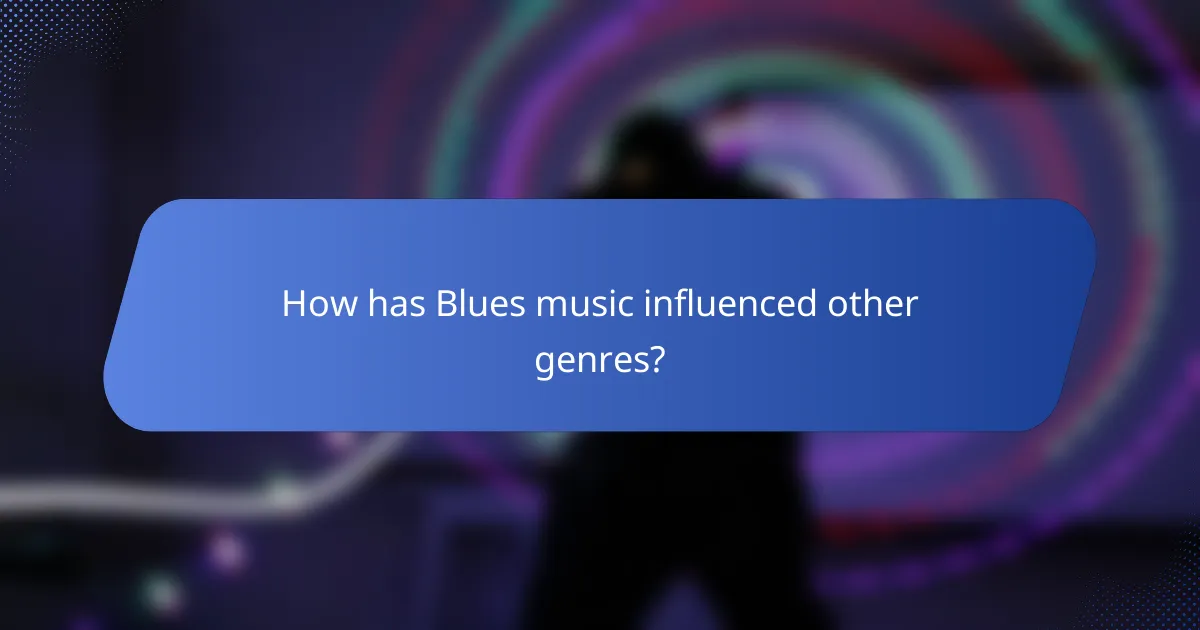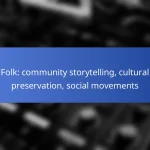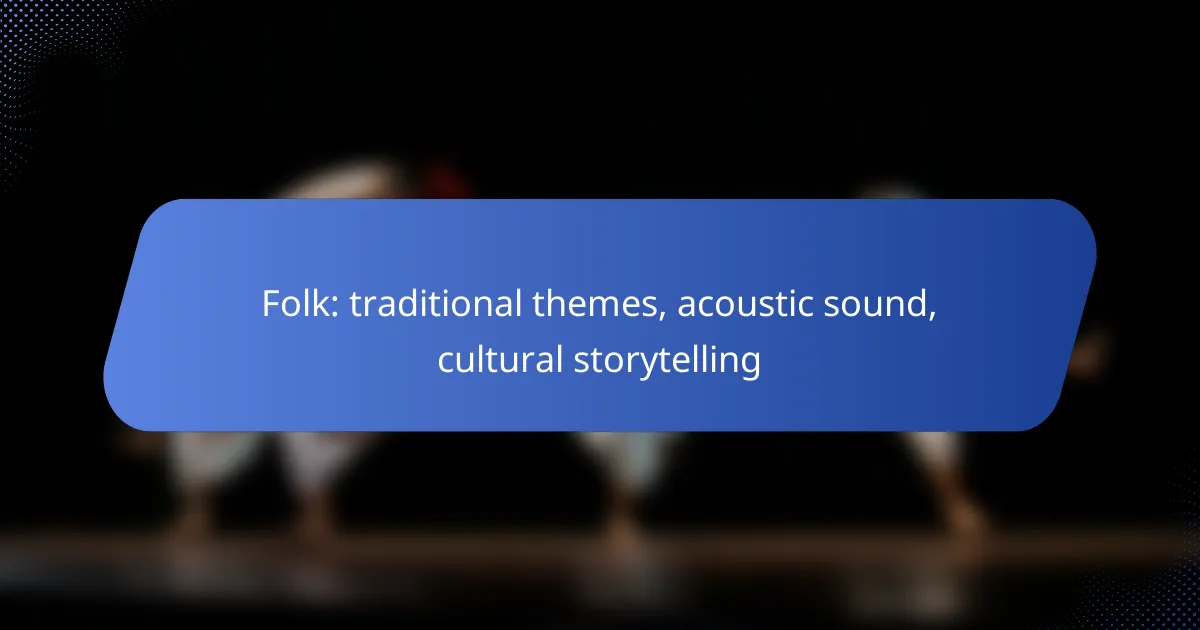The Blues is a profound musical genre that articulates deep emotions through soulful melodies and evocative lyrics, often exploring themes of sorrow and resilience. With its rich historical roots in African American communities of the southern United States, the Blues has evolved to include expressive guitar solos that showcase both technical skill and personal storytelling. This unique blend of emotional depth and musicality makes the Blues a powerful medium for conveying the human experience.

How does the Blues express emotions?
The Blues expresses emotions through its deep, soulful melodies and poignant lyrics that often reflect themes of sorrow, love, and hardship. This genre utilizes various musical techniques to convey feelings, making it a powerful form of emotional expression.
Melancholic themes
Melancholic themes are central to the Blues, often exploring feelings of loss, longing, and despair. Lyrics frequently recount personal struggles, heartbreak, and the challenges of life, resonating with listeners on a profound level.
Common motifs include unrequited love, financial difficulties, and existential reflections. These themes create a relatable narrative that allows audiences to connect emotionally with the music.
Improvisational techniques
Improvisational techniques play a crucial role in the emotional expression of the Blues. Musicians often use spontaneous guitar solos to convey their feelings, allowing for a personal touch that varies from performance to performance.
Techniques such as bending notes, using slides, and incorporating call-and-response patterns enhance the emotional depth of solos. This improvisation invites listeners into the artist’s emotional journey, making each performance unique.
Vocal delivery styles
Vocal delivery styles in the Blues are characterized by their raw, expressive quality. Singers often employ techniques like growling, shouting, or whispering to convey a range of emotions, from deep sorrow to joyful celebration.
Additionally, the use of phrasing and timing can significantly impact the emotional weight of a song. For instance, a delayed note can heighten tension, while a quick, rhythmic delivery can evoke excitement, showcasing the versatility of vocal expression in the genre.

What are the key guitar solos in Blues music?
Key guitar solos in Blues music are characterized by their emotional depth and technical skill, often serving as a vehicle for personal expression. Notable solos have defined the genre, showcasing the unique styles of legendary guitarists.
B.B. King’s “The Thrill Is Gone”
B.B. King’s “The Thrill Is Gone” features one of the most iconic guitar solos in Blues history. The solo combines expressive bends and vibrato, creating a sense of longing and heartbreak that resonates deeply with listeners.
King’s use of the minor pentatonic scale allows for a fluid, soulful sound that is both accessible and complex. His ability to convey emotion through each note makes this solo a masterclass in Blues guitar playing.
Stevie Ray Vaughan’s “Pride and Joy”
Stevie Ray Vaughan’s “Pride and Joy” showcases his exceptional technique and energetic style. The solo is marked by rapid-fire licks and a strong rhythmic pulse, reflecting Vaughan’s Texas roots.
Vaughan’s use of double stops and intricate phrasing creates a vibrant sound that captures the essence of the Blues. This solo is a great example of how to combine technical skill with emotional expression, making it a favorite among guitarists.
Eric Clapton’s “Crossroads”
Eric Clapton’s “Crossroads,” originally written by Robert Johnson, features a powerful guitar solo that has become a benchmark for Blues guitarists. Clapton’s interpretation is filled with intensity and improvisation, showcasing his mastery of the genre.
The solo incorporates bluesy bends and rapid runs that highlight Clapton’s unique style. This performance is a reminder of the importance of improvisation in Blues music, as each rendition can bring a fresh perspective to the classic piece.

What are the historical roots of Blues music?
The historical roots of Blues music trace back to the late 19th and early 20th centuries, primarily within African American communities in the southern United States. This genre emerged as a powerful form of emotional expression, reflecting the struggles and experiences of its creators.
Origins in African American communities
Blues music originated in African American communities, particularly in the Deep South, where cultural traditions blended African musical elements with European influences. This fusion created a unique sound characterized by its expressive lyrics and distinctive rhythms.
These communities often faced social and economic hardships, and Blues music became a vital outlet for expressing pain, resilience, and hope. The storytelling aspect of Blues reflects the lived experiences of African Americans during this era.
Influence of work songs and spirituals
Work songs and spirituals significantly influenced the development of Blues music. Work songs, sung by laborers in fields and factories, featured call-and-response patterns that became foundational to the Blues structure. These songs often conveyed messages of perseverance and community.
Spirituals, rooted in African American religious practices, also contributed to the emotional depth of Blues. The themes of suffering and redemption found in spirituals resonated with Blues musicians, enriching the genre’s lyrical content.
Development in the Mississippi Delta
The Mississippi Delta is often regarded as the birthplace of the Blues, where the genre flourished in the early 20th century. This region provided a rich musical environment, with many musicians emerging from small towns and rural areas.
Delta Blues is characterized by its raw sound, often featuring solo performers with acoustic guitars. Notable figures such as Robert Johnson and Muddy Waters helped popularize this style, influencing countless artists and shaping the future of American music.

What are the characteristics of Blues music?
Blues music is characterized by its emotional expression, distinct musical structure, and cultural roots. It often features themes of sorrow and resilience, conveyed through specific musical elements like the 12-bar structure and the use of blue notes.
12-bar structure
The 12-bar structure is a foundational element of Blues music, providing a consistent framework for composition. This structure typically consists of three lines of lyrics, each lasting four bars, often following a pattern of I-IV-V chords.
Musicians can experiment within this framework by varying the rhythm or adding embellishments. For example, a common progression might involve the chords C, F, and G in the key of C, allowing for improvisation while maintaining the overall form.
Call and response patterns
Call and response patterns are integral to Blues music, reflecting its roots in African musical traditions. This technique involves a leader singing or playing a phrase (the call), followed by a responding phrase from another musician or group (the response).
This interaction creates a conversational dynamic, enhancing the emotional depth of the performance. For instance, a guitarist might play a riff, and the vocalist responds with lyrics that echo or complement the musical phrase.
Use of blue notes
Blue notes are a defining feature of Blues music, adding a unique emotional quality to melodies. These notes, typically the flattened third, fifth, and seventh degrees of the scale, create a sense of tension and release that is central to the genre’s expressive power.
Musicians often bend these notes to enhance their emotional impact, making them sound “bluer.” For example, in the key of E, a guitarist might bend the G note to create a more poignant sound, effectively conveying feelings of longing or sadness.

How has Blues music influenced other genres?
Blues music has profoundly influenced various genres, shaping the sound and structure of many popular styles. Its emotional expression, distinctive guitar solos, and historical roots have paved the way for the evolution of rock, jazz, and R&B.
Impact on Rock and Roll
Blues is a foundational element of rock and roll, with many early rock artists drawing directly from its rhythms and themes. The use of the 12-bar blues progression became a staple in rock music, allowing for expressive guitar solos and powerful vocal performances.
Artists like Chuck Berry and Elvis Presley incorporated blues elements into their music, creating a sound that resonated with a wide audience. The emotional depth of blues lyrics also influenced rock songwriters, leading to a rich narrative tradition in the genre.
Connection to Jazz
The connection between blues and jazz is evident in the improvisational style that characterizes both genres. Jazz musicians often incorporate blues scales and progressions, allowing for a seamless blend of the two styles in performances.
Notable jazz artists, such as Louis Armstrong and B.B. King, have utilized blues techniques to enhance their musical expression. This interplay has led to the development of subgenres like jazz-blues, which showcases the emotional intensity of blues within a jazz framework.
Influence on R&B
Rhythm and blues (R&B) emerged as a direct descendant of blues, incorporating its emotional storytelling and musical structures. The genre often features a strong backbeat and soulful vocals, reflecting the influence of blues on its sound.
Artists like Ray Charles and Aretha Franklin blended blues with gospel and jazz elements, creating a rich, emotive style that defined R&B. The lyrical themes of love, heartache, and resilience found in blues are prevalent in R&B, further solidifying the connection between these two genres.

What are the modern interpretations of Blues?
Modern interpretations of Blues encompass a variety of styles that blend traditional elements with contemporary influences. Artists today often incorporate diverse musical genres, reflecting personal experiences and societal themes while maintaining the emotional core of Blues.
Contemporary Blues artists
Contemporary Blues artists like Joe Bonamassa, Susan Tedeschi, and Derek Trucks are redefining the genre with their innovative approaches. They often blend traditional Blues with rock, soul, and even jazz, creating a fresh sound that appeals to a wider audience. These artists frequently perform at major venues and festivals, showcasing their talent and the evolving nature of Blues music.
Fusion with other genres
Modern Blues frequently fuses with genres such as rock, hip-hop, and funk, resulting in unique sounds that resonate with younger audiences. For instance, artists like Gary Clark Jr. and Hozier incorporate elements of rock and soul, while others experiment with electronic music. This fusion not only broadens the appeal of Blues but also introduces new rhythms and lyrical themes.
Blues festivals in Australia
Australia hosts several prominent Blues festivals that celebrate both local and international talent. Events like the Byron Bay Bluesfest and the Melbourne International Blues Festival attract thousands of fans each year, featuring a mix of established and emerging artists. These festivals provide a platform for Blues musicians to connect with audiences and showcase the genre’s rich heritage and modern interpretations.










